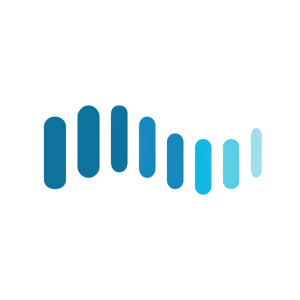Nevro Announces Three Important Clinical Data Publications for Treating Painful Diabetic Neuropathy with 10 kHz Therapy
Rhea-AI Summary
Nevro Corp. (NYSE: NVRO) announced three significant clinical publications for treating Painful Diabetic Neuropathy (PDN) with 10 kHz Therapy, including 12-month results from the SENZA-PDN Randomized Controlled Trial. Published findings highlight the effectiveness of high-frequency spinal cord stimulation (SCS) in providing significant pain relief and neurological improvements. Notably, 86% of participants reported over 50% pain relief at 12 months. Nevro's 10 kHz SCS is currently the only FDA-approved device for PDN, aiming to expand payer coverage policies for broader access.
Positive
- 12-month SENZA-PDN RCT shows 86% of participants reported >50% pain relief.
- Average pain relief recorded at 77.1% after one year.
- 68% of treatment group showed neurological improvements at 12 months.
- Real-world evidence supports 79.5% responder rate with >50% pain relief.
Negative
- None.
News Market Reaction 1 Alert
On the day this news was published, NVRO declined 0.13%, reflecting a mild negative market reaction.
Data tracked by StockTitan Argus on the day of publication.
REDWOOD CITY, Calif., Nov. 29, 2021 /PRNewswire/ -- Nevro Corp. (NYSE: NVRO), a global medical device company that is providing innovative, evidence-based solutions for the treatment of chronic pain, today announced three important clinical data publications for treating Painful Diabetic Neuropathy (PDN) with 10 kHz Therapy, including 12-month data from the landmark SENZA-PDN Randomized Controlled Trial (RCT) published online in Diabetes Care, as well as real-world evidence and a comparative literature review of high vs. low frequency SCS evidence, both published in the Journal of Diabetes Science and Technology. Findings from all three studies highlight the significant benefits of HFX™ for PDN¹ in the clinical and real-world settings. HFX for PDN is the only spinal cord stimulation (SCS) system approved by the U.S. Food and Drug Administration with a specific on-label indication for treating PDN.
"These three important clinical data publications further expand the growing body of positive clinical evidence supporting the use of 10 kHz Therapy in treating PDN patients and continue to clearly demonstrate the safety, durability and consistency of pain relief and other outcomes that can be achieved with HFX for PDN in both clinical and real world settings," said D. Keith Grossman, Chairman, Chief Executive Officer and President of Nevro. "No conventional, low-frequency SCS treatments have demonstrated such positive results in treating PDN patients. We believe that these data, along with our robust clinical dossier, will help support expansion of payer coverage policies to exclusively cover 10 kHz Therapy for PDN. These data highlight our commitment to deliver comprehensive, life-changing solutions that continue to set the standard for enduring patient outcomes in chronic pain treatment."
12-Month SENZA-PDN RCT Results
Published 12-month data from the SENZA-PDN RCT, the largest RCT to evaluate SCS to treat PDN, showed that high-frequency 10 kHz Therapy results in significant, durable pain relief and neurological improvements in patients with persistent PDN.² The publication also includes results for patients before and after crossover from the Conventional Medical Management (CMM) arm to 10 kHz Therapy. These findings further substantiate the benefit of HFX for PDN, a Senza SCS system that uses 10 kHz Therapy to treat pain from diabetic neuropathy.
Diabetes Care publication can be accessed online (subscription required) at: https://care.diabetesjournals.org/lookup/doi/10.2337/dc21-1813
"Patients with painful diabetic neuropathy have no way to cure their condition, and many have trouble achieving relief from their pain," said Dr. Erika Petersen, Professor of Neurosurgery, Director of Functional and Restorative Neurosurgery at the University of Arkansas for Medical Sciences, and lead investigator of the SENZA-PDN study. "However, with high-frequency 10 kHz Therapy, I'm seeing durable pain relief and potentially disease-modifying neurological improvements, which could be a game-changer when it comes to how we treat patients with impaired sensory function."
The SENZA-PDN RCT 12-month data demonstrated the following benefits of 10 kHz SCS:
Durable Pain Relief:
- At 12 months,
86% of participants in the 10 kHz SCS study arm reported pain relief >50% , while the average pain relief was77.1% (% reduction of VAS from baseline). - After six months with 10 kHz SCS therapy,
84% of participants in the crossover arm reported pain relief >50% , and average pain relief was70.3% (% reduction of VAS from baseline).
Consistent Safety:
- Safety was consistent with published reports of adverse event rates in traditional SCS trials, including for infections and explants in people without diabetes.3,4,5
- Only 5 of 154 permanent SCS devices were explanted for a
3.2% explant rate (all explants were due to infection).
Neurological Improvement:
- At 12 months,
68% of the 10 kHz SCS treatment group had observed improvement upon an investigator-assessed neurological examination, which included testing lower limb motor strength, sensory function, and reflexes. - After six months with 10 kHz SCS therapy,
62% of the crossover arm had observed improvement upon an investigator-assessed neurological examination, which included testing lower limb motor strength, sensory function, and reflexes.
Real-World Evidence for Treatment of PDN
Published in the Journal of Diabetes Science and Technology, "A Real-World Analysis of High-Frequency 10 kHz Spinal Cord Stimulation for the Treatment of Painful Diabetic Peripheral Neuropathy" is a retrospective, multi-center, real-world review in typical clinical practices that assessed pain relief and functional improvements for patients who were trialed and permanently implanted with a 10 kHz SCS device.6 This data was extracted from a real-world database of patients (HFX Cloud™) with diabetic neuropathy.
Journal of Diabetes Science and Technology publication can be accessed online (subscription required) at: https://doi.org/10.1177/19322968211060316
Results from this real-world review demonstrated:
79.5% (58/73) of patients were treatment responders, defined as having at least50% patient-reported pain relief from baseline.- Average follow-up was 21.8 months (range: 4.3 to 46.3 months)
- Majority of patients reported improvements in sleep and overall function relative to their baseline
High-Frequency vs Low-Frequency SCS in PDN
Also published in the Journal of Diabetes Science and Technology, "Neuromodulation in the Treatment of Painful Diabetic Neuropathy: A Review of Evidence for Spinal Cord Stimulation" is a comparative literature review that evaluated current evidence for both high-frequency and low-frequency SCS to treat PDN.7
Journal of Diabetes Science and Technology publication can be accessed online (subscription required) at: https://doi.org/10.1177/19322968211060075
The analysis concluded that high-frequency (10 kHz) SCS offers several advantages over low-frequency, paresthesia-dependent SCS, including:
- Greater pain relief
- A higher proportion of patients achieving treatment success
- Paresthesia-free
- Evidence of improved neurological function
An investor presentation is available in the "Investor Relations" section of Nevro's website at www.nevro.com.
About the SENZA-PDN RCT
Nevro's SENZA-PDN study, the largest RCT of spinal cord stimulation treatment conducted for PDN, compares 10 kHz SCS plus CMM to CMM alone in 216 patients at 18 centers in the United States. The primary endpoint of the study is a composite endpoint that includes the difference in proportion of treatment responders without deterioration of neurological deficits at three-month follow-up. Study participants continue to be followed out to 24 months.
The SENZA-PDN RCT 12-month data show sustained effectiveness of 10 kHz SCS and also includes the results for patients that crossed over from CMM to 10 kHz after six months. Subjects could opt to crossover to the other treatment arm if they had insufficient pain relief (<
About Painful Diabetic Neuropathy (PDN)
The World Health Organization estimates 422 million adults with diabetes worldwide and prevalence (
Internet Posting of Information
Nevro routinely posts information that may be important to investors in the "Investor Relations" section of its website at www.nevro.com. The company encourages investors and potential investors to consult the Nevro website regularly for important information about Nevro.
About Nevro
Headquartered in Redwood City, California, Nevro is a global medical device company focused on providing innovative products that improve the quality of life of patients suffering from debilitating chronic pain. Nevro has developed and commercialized the Senza spinal cord stimulation (SCS) system, an evidence-based, non-pharmacologic neuromodulation platform for the treatment of chronic pain. The Senza® System, Senza II™ System, and the Senza® Omnia™ System are the only SCS systems that deliver Nevro's proprietary 10 kHz Therapy. Senza, Senza II, Senza Omnia, HFX, HXF Coach, HFX Cloud, HFX Connect, Nevro and the Nevro logo are trademarks of Nevro Corp.
To learn more about Nevro, connect with us on LinkedIn, Twitter, Facebook and Instagram.
1 HFXTM for PDN means that a patient has been implanted with a Senza System and programmed to include a frequency of 10 kHz.
2 Petersen et al. Durability of High-Frequency 10-kHz Spinal Cord Stimulation for Patients With Painful Diabetic Neuropathy Refractory to Conventional Treatments: 12-Month Results From a Randomized Controlled Trial. Diabetes Care. 2022;45:e1–e4; https://doi.org/10.2337/dc21-1813.
3 Hoelzer et al. Spinal Cord Stimulator Implant Infection Rates and Risk Factors: A Multicenter Retrospective Study. Neuromodulation. 2017;E-pub ahead of print; DOI:10.1111/ner.12609.
4 Mekhail et al. Retrospective Review of 707 Cases of Spinal Cord Stimulation: Indications and Complications. Pain Practice. 2011;11(2):148–153.
5 Hayek et al. Treatment-Limiting Complications of Percutaneous Spinal Cord Stimulator Implants: A Review of Eight Years of Experience From an Academic Center Database. Neuromodulation. 2015;18:603–609.
6 Chen et al. A Real-World Analysis of High-Frequency 10 kHz Spinal Cord Stimulation for the Treatment of Painful Diabetic Peripheral Neuropathy. Journal of Diabetes Science and Technology. 2021; https://doi.org/10.1177/19322968211060316.
7 Strand NH, Burkey AR. Neuromodulation in the Treatment of Painful Diabetic Neuropathy: A Review of Evidence for Spinal Cord Stimulation. Journal of Diabetes Science and Technology. 2021; https://doi.org/10.1177/19322968211060075.
8 World Health Organization. (2016). Global report on diabetes. World Health Organization. https://apps.who.int/iris/handle/10665/204871
9 Schmader KE. Epidemiology and impact on quality of life of postherpetic neuralgia and painful diabetic neuropathy. Clin J Pain. 2002;18(6):350-354.
10 CDC National Diabetes Statistics Report 2020; Schmader KE. Epidemiology and impact on quality of life of postherpetic neuralgia and painful diabetic neuropathy. Clin J Pain. 2002;18(6):350-354.
11 Trinity Partners Market Research 2017.
Forward-Looking Statements
In addition to historical information, this press release contains forward-looking statements reflecting the company's current beliefs and expectations of management made pursuant to the safe harbor provisions of the Private Securities Litigation Reform Act of 1995, including: our belief that our PDN clinical data, along with our robust clinical dossier, will help support expansion of payer coverage policies to exclusively cover 10 kHz Therapy for PDN; our belief that 10 kHz Therapy for PDN could be a game-changer when it comes to how we treat patients with impaired sensory function; and our expectations for the size of the PDN market. These forward-looking statements are based upon information that is currently available to us or our current expectations, speak only as of the date hereof, and are subject to numerous risks and uncertainties, including our ability to successfully commercialize our products; our ability to manufacture our products to meet demand; the level and availability of third-party payor reimbursement for our products; our ability to effectively manage our anticipated growth and the costs and expenses of operating our business; our ability to protect our intellectual property rights and proprietary technologies; our ability to operate our business without infringing the intellectual property rights and proprietary technology of third parties; competition in our industry; additional capital and credit availability; our ability to attract and retain qualified personnel; and product liability claims. These factors, together with those that are described in greater detail in our Quarterly Report on Form 10-Q filed on November 8, 2021, as well as any reports that we may file with the Securities and Exchange Commission in the future, may cause our actual results, performance or achievements to differ materially and adversely from those anticipated or implied by our forward-looking statements. We expressly disclaim any obligation, except as required by law, or undertaking to update or revise any such forward-looking statements.
Investors and Media:
Julie Dewey, IRC
Nevro Corp.
Vice President, Investor Relations & Corp Communications
650-433-3247 | julie.dewey@nevro.com
![]() View original content to download multimedia:https://www.prnewswire.com/news-releases/nevro-announces-three-important-clinical-data-publications-for-treating-painful-diabetic-neuropathy-with-10-khz-therapy-301432756.html
View original content to download multimedia:https://www.prnewswire.com/news-releases/nevro-announces-three-important-clinical-data-publications-for-treating-painful-diabetic-neuropathy-with-10-khz-therapy-301432756.html
SOURCE Nevro Corp.









